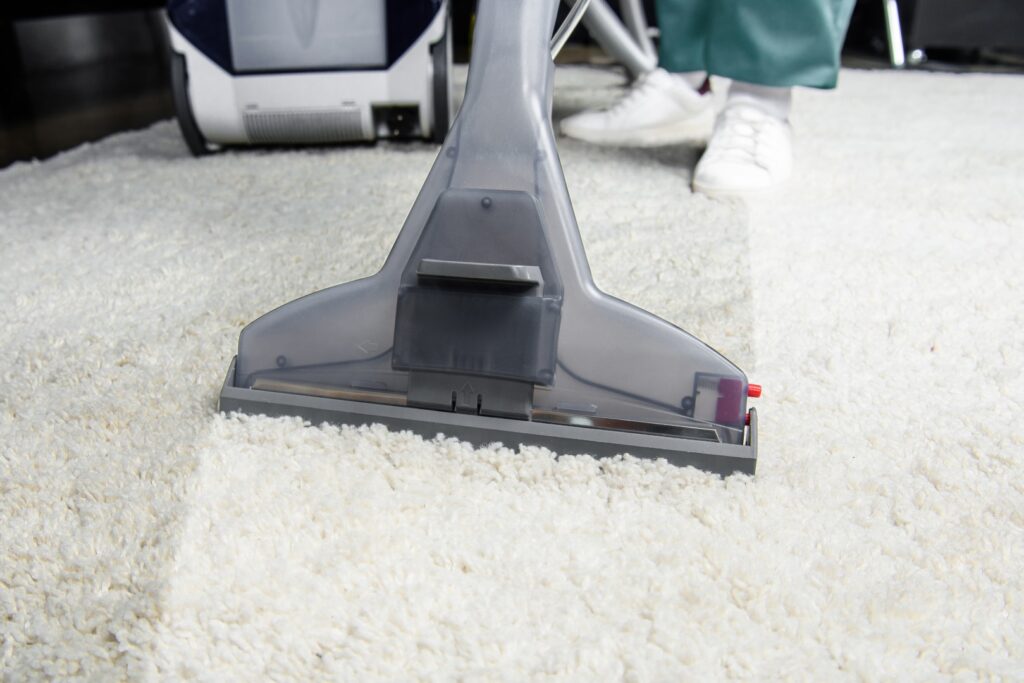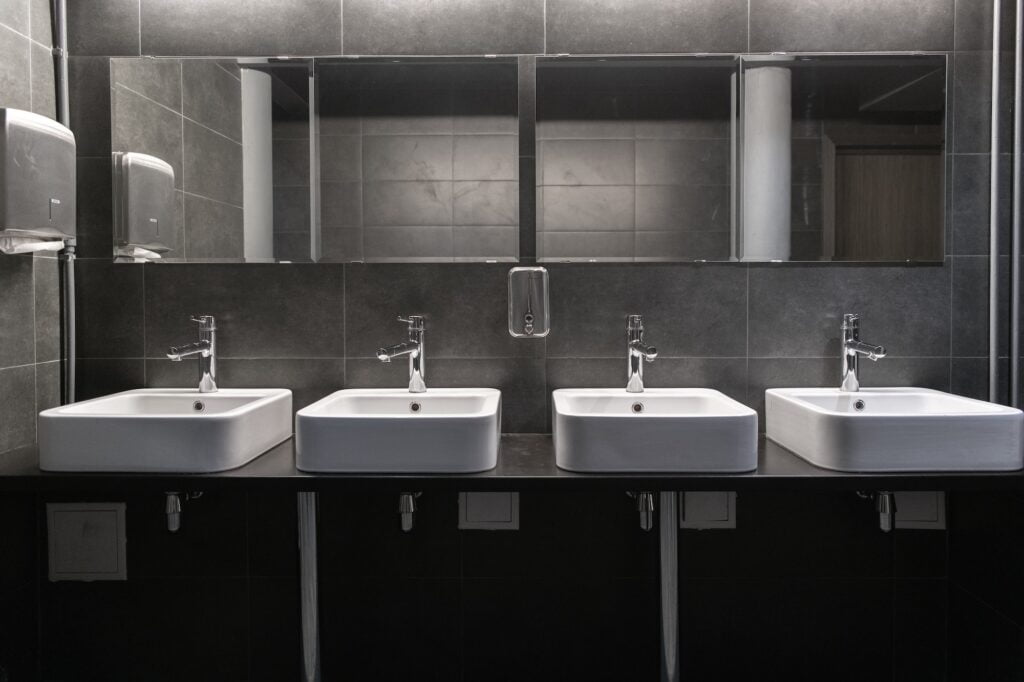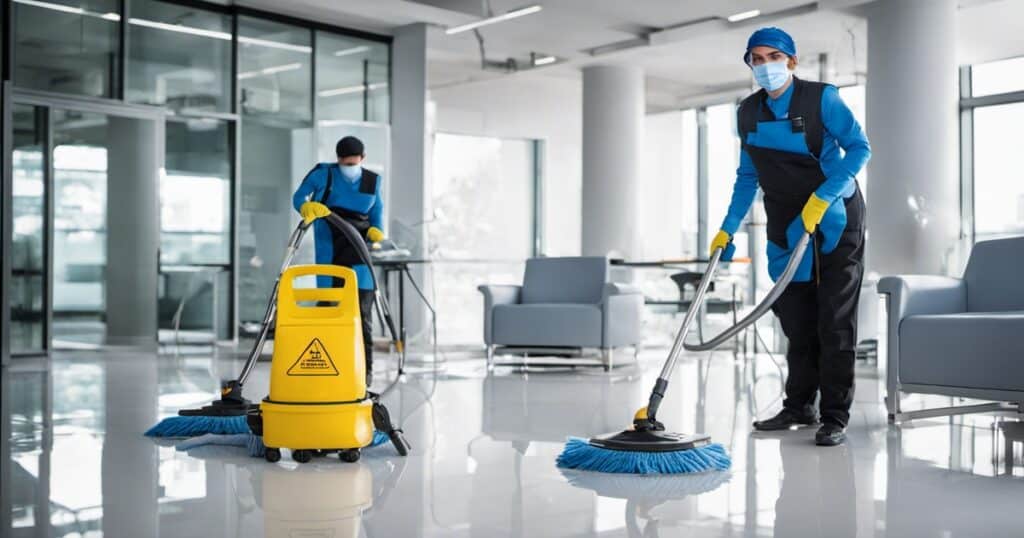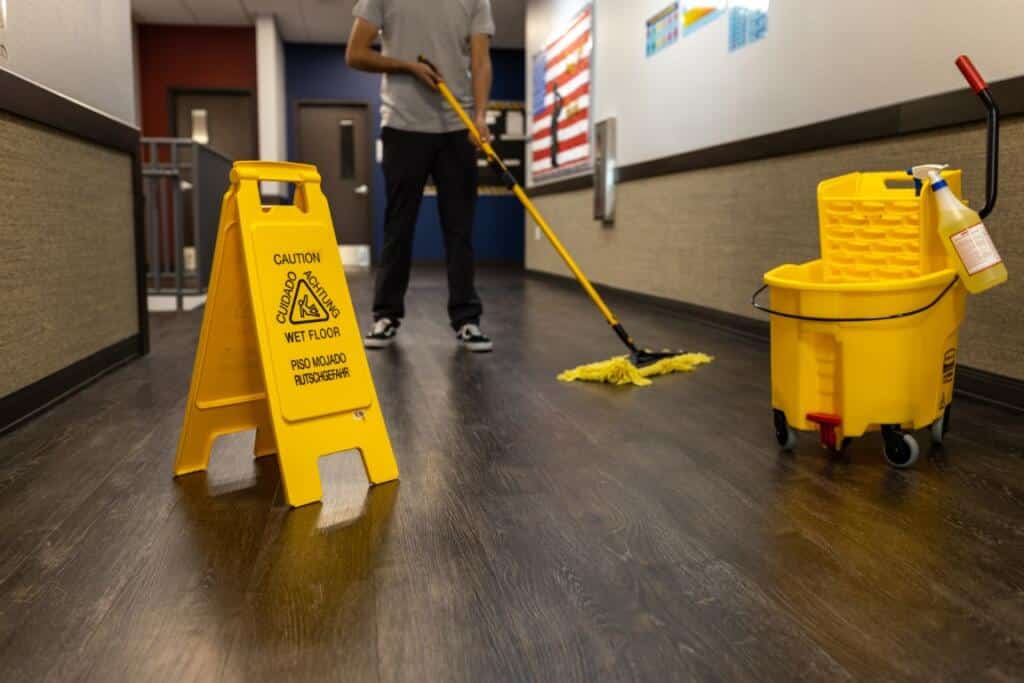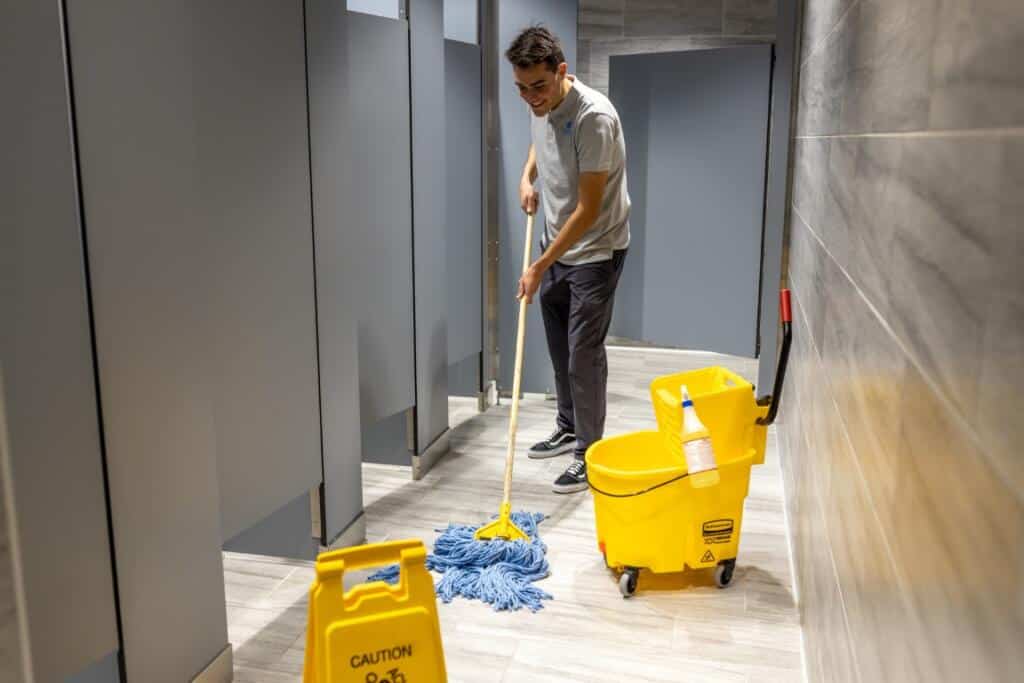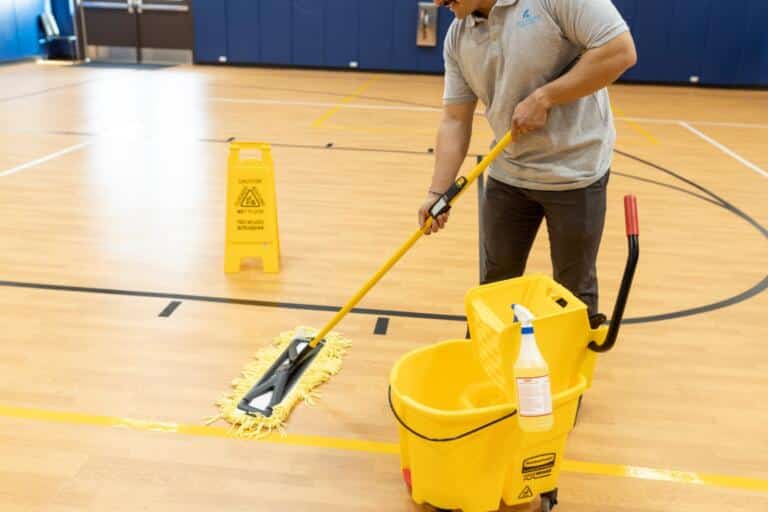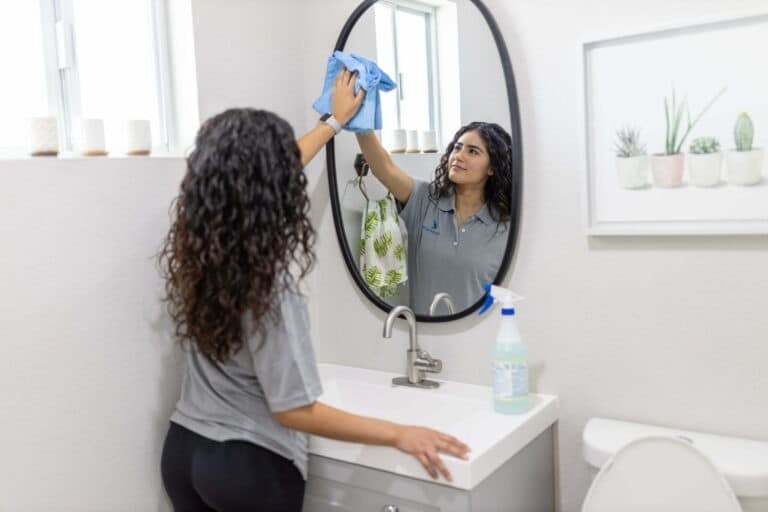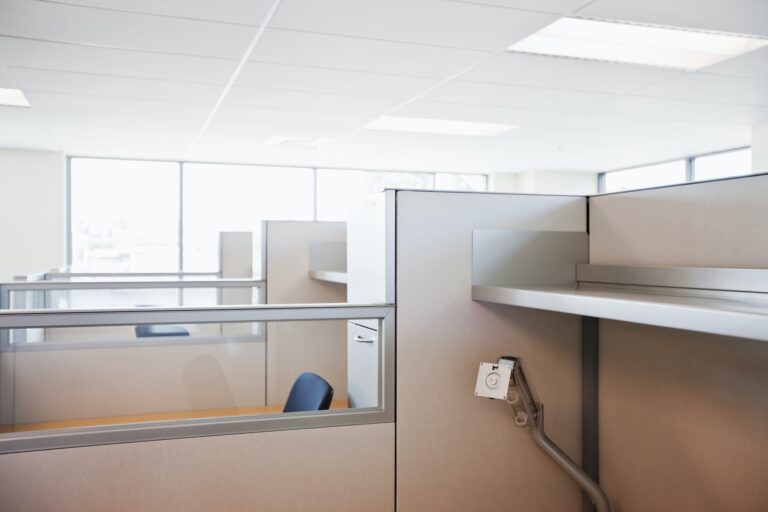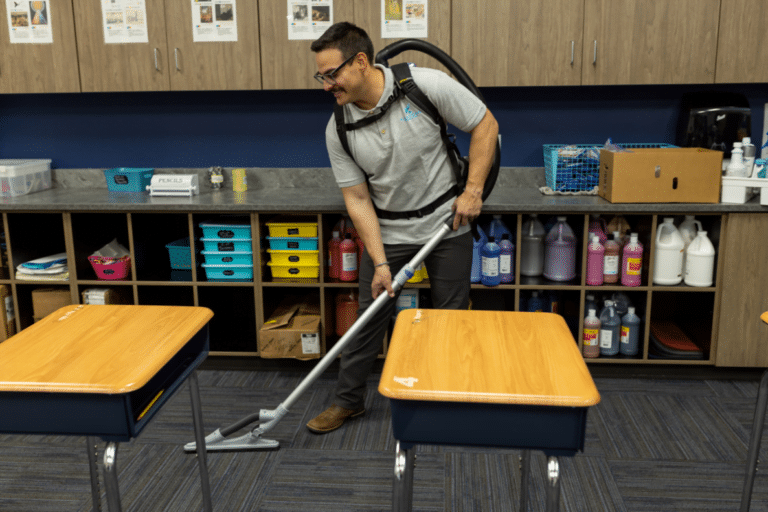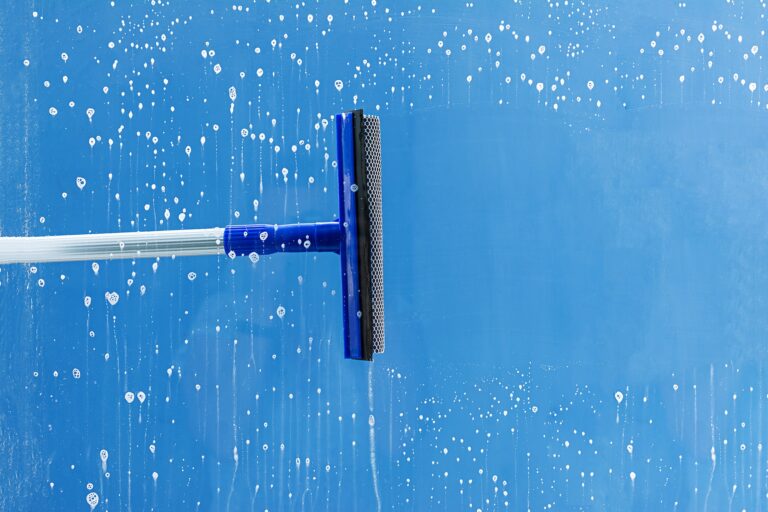Introduction: The Art of Keeping Your Business Clean Without Breaking the Bank
The Beauteous Blend of Business and Cleanliness
The allure of sparkling floors, smudge-free windows, and an overall immaculate environment in a business setting is not just an aesthetic delight; it’s an essential facet of running a successful enterprise. This importance springs from two main wells. First, cleanliness directly influences the perception stakeholders, including customers and employees, have about your business.
A spotless setting speaks volumes about your attention to detail, professionalism, and respect for those you serve. Beyond impressions lie more tangible benefits.
A well-maintained work environment can enhance employee productivity by reducing distractions brought about by clutter and disorganization. Better still, it safeguards their health by minimizing the spread of germs—quite a pertinent concern in today’s pandemic-scarred world.
Penny-Pinching for Pristine Premises
Despite its undeniable importance, many businesses grapple with maintaining top-notch cleanliness due to budget constraints. Costly cleaning supplies coupled with the sometimes steep prices charged by professional cleaning services can make this task seem daunting for businesses operating on tight budgets.
However, this need not be a Sisyphean struggle against financial limitations. With some savvy strategies and smart planning—even businesses with modest budgets can strike a balance between cost-effectiveness and cleanliness.
Imagine cutting costs without compromising on the cleanliness or appeal of your workspace—that’s what we aim to help you achieve in this article series. By exploring DIY solutions to buying bulk supplies; from green cleaning to efficient routines; from outsourcing decisions to tax deductions—we’ll delve into each corner (pun intended) that can aid in achieving pristinely clean premises without hemorrhaging cash.
Expertise in Homemade Cleaning Concoctions
The idea of creating your own cleaning products may seem daunting at first, but rest assured, it’s simpler than you might think. Not only can these do-it-yourself solutions help curtail your expenditure, they also ensure you have control over what goes into your cleaning agents.
No more worrying about harsh or potentially harmful chemicals; you’ll be privy to each ingredient that graces your workspace. Let’s debunk the first myth related to homemade cleaners – lack of efficacy.
Believe it or not, vinegar, baking soda, and lemon – items often found in your kitchen pantry – pack quite a punch when it comes to tackling grime and dirt. It’s merely about understanding their strengths and employing them accordingly.
For instance, vinegar is an excellent disinfectant and deodorizer while baking soda is a gentle abrasive agent perfect for scrubbing tasks. Investing time in mastering these recipes will not only yield significant cost savings but also provide an opportunity for team-building exercises.
Imagine the camaraderie as each member whips up a batch of cleaner together! This can foster teamwork while underpinning the importance of cleanliness.
Recipes for Economically Viable Eco-Friendly Cleaners
No article on cost-effective cleaning solutions would be complete without providing some tried-and-true DIY cleaner formulas. Let’s start with an all-purpose cleaner: Combine one part white vinegar with one part water, add lemon rind for extra scent (and some added disinfecting power). Pour this mixture into a spray bottle and voila!
You have yourself an all-purpose cleaner that can tackle surfaces ranging from countertops to window panes. Moving on to a heavy-duty scrub suitable for bathroom tiles or sinks: It’s as simple as making a paste with half a cup of baking soda and enough liquid soap to get the desired consistency.
You can even add 10-15 drops of essential oil (like lavender or tea tree) if you want your concoction to leave behind a pleasing aroma. Last but not least let’s whip up some glass cleaner – Mix two cups of water, half a cup of white or cider vinegar with 1/4 cup rubbing alcohol (70% concentration).
Add one to two drops of orange essential oil for smell (it’s optional). This solution will ensure streak-free windows and mirrors at nearly no cost!
All these recipes constitute green alternatives that are light on the pocket yet heavy-duty when it comes to their cleaning prowess. Plus they keep hazardous chemicals out ensuring safety alongside cleanliness–a win-win situation indeed!
Bulk Buying: An Economical Approach to Cleaning Supplies
Unraveling the Economics of Bulk Buying
As paradoxical as it may sound, spending more upfront can indeed lead to notable savings in the long run. This is especially true when it comes to purchasing cleaning supplies for business use. The reasoning behind this is a fundamental tenet of economics known as economies of scale, where buying in larger quantities reduces the price per unit.
Consider the case of cleaning detergents or sanitizers. When you purchase these items individually, you pay for each product’s packaging, branding, and a host of logistics costs that get passed on to you as a consumer.
On the other hand, when you buy in bulk – say a gallon instead of a pint – those additional costs per unit drop significantly. But how does this translate into actual savings?
Let’s assume that a single bottle of cleaning detergent costs $5 and lasts for a week. Over the month, you’d spend $20 on detergent alone.
In contrast, consider purchasing a larger container that provides enough detergent for an entire month but only costs $15. By switching to bulk buying, you’ve saved 25% without compromising on cleanliness!
Scouting For Bulk Cleaning Supply Deals
Now that we’ve established why bulk buying makes economic sense let’s delve into where one can find these cost-saving deals. Several online platforms have made it easier than ever before for businesses to switch from retail shopping.
Websites like Amazon Business cater specifically to companies by offering discounted rates on bulk purchases. Similarly, wholesalers like Costco or Sam’s Club offer membership programs where businesses can access their vast array of products at reduced prices.
However, keep in mind that not all ‘bulk’ deals are created equal – some may offer substantial savings while others might only yield modest discounts or none at all! Therefore it’s crucial to take your time comparing prices and calculating cost-per-unit before taking the plunge.
Another important aspect is storage: ensure your business has adequate space to accommodate these larger quantities without causing clutter or inconvenience. : though it may require an initial investment and some additional planning around storage and usage rates; smartly strategizing your approach towards bulk buying can yield substantial long-term savings – enhancing not just cleanliness but also your bottom line.
Green Cleaning: The Environmentally Conscious Choice that Bolsters Your Budget
The term ‘green cleaning’ might evoke images of saplings sprouting from broomsticks, but in reality, it encapsulates a simple yet powerful concept. Green cleaning refers to the practice of using cleaning methods and products that are environmentally friendly. This means they have been designed to preserve human health and environmental quality.
But beyond its noble ecological implications, green cleaning also presents a myriad of cost benefits for businesses. Embracing green cleaning can lead to substantial savings in several ways.
First, many green products are highly concentrated, meaning you use less product per clean. This results in fewer purchases over time- a definite thumbs up for the budget-conscious!
Additionally, resorting to DIY eco-friendly solutions like vinegar or baking soda further brings down costs while minimizing chemical exposure. More importantly though, adopting green cleaning practices enhances indoor air quality reducing potential health risks to employees and subsequent sick days.
Green cleaning is not merely about replacing your conventional cleaning tools with their greener counterparts; it’s about shifting your entire approach towards maintenance and cleanliness. As businesses increasingly recognize this global shift towards sustainability as not just ethical, but practical too; the cost benefits become clear as crystal.
Affordable Green Cleaning Products: Where Eco-Friendly Meets Economically Sensible
In today’s market saturated with various ‘green’ claims it is essential for businesses to identify true eco-friendly products that don’t compromise on budget constraints either. One popular option is Seventh Generation cleaners which offer a broad range of products at competitive prices without compromising on environmental sustainability – a factor reflected in their EPA Safer Choice Certification.
Similarly Ecover’s plant-based cleaners provide an affordable alternative without skimping on effectiveness or earth-friendliness. For those seeking more niche options there’s Method; known for its design-savvy packaging and cruelty-free formulas available at accessible price points across major retailers both online and offline.
Then there’s Biokleen- another cost-effective option offering everything from all-purpose cleaners to laundry detergents made with renewable energy offsets. The world of green cleaning may appear overwhelming initially given the plethora of options available but remember: The goal isn’t just finding any eco-friendly product—it’s finding one that aligns with your business’ needs and budgetary confines while contributing positively towards the planet!
The Symphony of Cleanliness: Developing a Time-Saving Cleaning Routine
In the harmonious orchestra of business operations, cleanliness plays a crucial role. Yet, much like the individual notes that create a melody, each cleaning task doesn’t have to be time-consuming to contribute effectively. The trick is in developing a time-saving cleaning routine.
Firstly, prioritize your tasks based on their frequency and necessity. Daily tasks will include things like wiping down surfaces and sweeping floors.
These are non-negotiable elements of maintaining cleanliness and hygiene. Moreover, they can usually be done rather quickly if handled every day.
Weekly chores might involve deeper cleans such as washing windows or vacuuming carpets. Secondly, consider the layout of your business space.
Can you organize the progression of tasks to minimize travel time within the premises? This ‘cleaning route’ can streamline activity and reduce wasted energy – think about it similar to an artist moving methodically across their canvas.
Ensure that everyone in your team knows their part in this cleaning symphony. Clear delegation not only saves time but also avoids confusion or overlap in effort.
Harmonizing Tasks: Training Your Staff to Clean Efficiently
Proper training is like fine-tuning an instrument; it’s not just about getting people to do their part but ensuring they do so efficiently and effectively too. Start with teaching your staff about different cleaning solutions and when it’s best to use them.
A common mistake is assuming one product does all – this could lead not only to ineffective cleaning but also possible damage due to inappropriate application. Next, demonstrate proper techniques for each task; show them how certain movements or methods get better results with less effort – this could range from showing how best to mop floors without leaving streaks behind, right through to demonstrating effective dusting techniques that don’t merely relocate dust from one spot to another!
Instill in them an understanding of health and safety regulations related specifically to cleaning processes; these guidelines are there not only for their protection but also for those who enter your premises thereafter. Remember that an efficient team is like a well-tuned orchestra playing harmoniously together; each individual doing their part swiftly yet efficiently contributes hugely towards creating an environment conducive for productivity – all whilst keeping costs down!
Outsourcing vs In-house Cleaning: A Fiscal Face-off
One of the most significant decisions a business owner grapples with in relation to cleanliness is whether to keep the cleaning tasks in-house or to outsource them. Both methods have their unique advantages and drawbacks, but for this discussion, we will focus on their financial impacts. Do you hire a full-time team or do you call upon an external cleaning service?
The answer lies not just in the evident costs but also hidden ones. Consider first the realm of in-house cleaning.
Hiring your own team means you have direct control over when and how things are done, which can give you peace of mind and flexibility. However, it’s essential to consider salaries, benefits, training costs, and even potential liabilities associated with accidents during work hours.
Furthermore, there’s also the need for purchasing and maintaining cleaning equipment. On the flip side is outsourcing where you pay a contractually agreed amount to a professional cleaning company that takes care of everything for you.
This cost typically bundles labor, equipment expense and eliminates many hidden costs such as staff training or benefit packages associated with hiring your own cleaners. However, lack of control over timing or specific tasks might be trade-offs.
“Cleaning Price Tag: Not Always What It Seems”
The choice between outsourcing versus in-house cleaning seems like a no-brainer when we look at just basic numbers – after all outsourcing appears cheaper initially. But don’t let this facile assessment delude you; there’s more than meets the eye here. In some cases where your business operates outside standard working hours or requires highly specialized cleaning such as medical facilities or restaurants, having an in-house team could actually be more cost-effective despite higher upfront costs.
That’s because professional services charge premiums for after-hours work or specialized sanitation requirements. In contrast though if your operations follow standard business hours and require conventional office space tidying up – dusting off desks, vacuuming floors etc., outsourcing would indeed be cheaper based on sheer economics of scale these companies operate under which allows them reduced per unit cost giving them room to offer competitive pricing while still maintaining profitability.
Investing in High-Quality, Long-Lasting Equipment: An Immaculate Investment for Impeccable Cleanliness
Unearthing the Treasure Trove of Long-Term Savings
The fable of the tortoise and the hare isn’t just a bedtime story – it’s an allegory that translates surprisingly well into the business world. When it comes to investing in cleaning equipment, playing the hare – by opting for cheaper, lower-quality tools – may seem like a victory in the short term.
However, like our slow-and-steady friend from Aesop’s fable, investing in high-quality equipment is often a testament to endurance, longevity and ultimately – cost-effectiveness. High-quality cleaning tools may come with a heftier price tag initially, but they invariably prove their worth over time.
These stalwarts of cleanliness are designed to last longer and perform better than their inexpensive counterparts. This means fewer replacements over time and less downtime due to faulty or ineffective equipment.
Consider this scenario: A business opts for budget brooms that need replacing every couple of months versus an industrial-grade broom designed for heavy-duty use that lasts for several years. The initial investment might be higher for the latter but calculated over years; it’s easy to see where real savings lie.
A Compendium of Cost-Effective Cleaning Conquerors
Choosing durable cleaning equipment doesn’t mean you have to compromise on cost-effectiveness. Here are some recommendations for products that give you bangs galore for your buck:
Firstly, consider microfiber cloths and mops over traditional cotton ones. Microfiber not only picks up more dirt and bacteria but also withstands more washings than cotton – meaning they’ll outlive their counterparts while providing superior cleanliness.
For vacuum cleaners, brands like Dyson provide high-efficiency particulate air (HEPA) filter models which are renowned for their durability as well as capability to trap small particles others simply recirculate back into your business environment. When it comes to floor scrubbers or polishers – Tennant is one brand known not just for its dependable performance but also longevity resulting from robust build quality.
In essence, investing wisely today can create a ripple effect of savings throughout your business’s journey. Remember – good quality doesn’t always mean an exorbitant expense if you understand where true value lies!
The Taxman Cometh: A Guide to Deductible Cleaning Expenses
Grasping the labyrinthine intricacies of tax deductions might seem daunting, but fear not. When it comes to business expenses, cleaning costs are among the legitimate deductions you can claim. It’s essential to understand that any expenditure linked directly to your company’s operational activities could potentially end up on your deductible list.
For instance, outlays for cleaning supplies and equipment or payments made to a professional cleaning service are entirely deductible. These are deemed ordinary and necessary expenses in maintaining your business premises and thus form part of running a thriving enterprise.
Even expenditures on less tangible facets like cleanliness training for staff members or purchasing disinfectants for a healthier work environment can be written off. Bear in mind though, the key here is legitimacy and relevance.
Any extravagant or lavish expenditure will likely raise eyebrows at the tax office; so keep it within reason. Ensure you maintain comprehensive records with receipts for all purchases and services hired – an orderly record keeping system can make this facet of financial management significantly more manageable.
‘Clean’ Your Way To Maximum Tax Reductions
Knowing you can make these deductions is one thing; maximizing them is another art altogether. Begin by integrating best ‘cleanliness practices’ into your day-to-day operations – making cleanliness a routine rather than an occasional deep-clean event can spread costs over time, leading to consistent deductions each fiscal year.
Auditing your existing cleaning practices will provide insight into potential areas where spending could be increased beneficially. Could investing in more efficient (and perhaps initially more expensive) cleaning tools reduce labor costs over time?
Could swifter, more effective cleaning methods enable better use of workspaces leading ultimately to increased productivity? These considerations factor into how businesses could maximise their tax reductions related to cleanliness.
Remember that consultation with a certified public accountant or tax professional is invaluable when navigating these waters – they’re equipped with expert knowledge about specific local regulations and industry-specific nuances that may apply to your situation. Cleanliness in business isn’t just about gleaming floors and dust-free desks; it’s also about clean audits, clear records, and cost-effective strategies that reflect favorably when Uncle Sam comes calling!
Conclusion: Embracing Cleanliness Without Fear of Costs
A Review of Cost-Effective Cleanliness
In the journey traversed within this article, we have demystified the often daunting task of maintaining a clean business premises on a budget. We’ve thrown light on various strategies, from harnessing the power of DIY and bulk buying, to embracing green cleaning and efficient routines.
The foray into DIY cleaning solutions not only made us realize the potential savings but also highlighted how businesses can contribute towards an eco-friendly world. Bulk buying, while requiring a larger upfront cost, leads to significant savings in the long run.
Green cleaning further amplified our understanding about being conscious consumers who are mindful towards the environment. It also served as a reminder that going green doesn’t necessarily equate to spending more green – financially speaking.
Investments in high-quality cleaning tools and equipment, while appearing to strain resources initially, tend to yield considerable savings over time due to their durability and efficacy. The chapter on outsourcing versus in-house cleaning helped dispel certain myths associated with both methods and provided insights into when one option might be more cost-effective than the other.
Understanding Tax Deductions Related To Cleanliness
Treading into slightly more complex territory, we decoded tax deductions related to business cleanliness expenses. By understanding these deductions better, businesses can potentially save money during tax season – an aspect often overlooked by many entrepreneurs. This knowledge could redefine your approach towards cleanliness costs significantly.
The Path Ahead: Cleaning Without Cost Concerns
As we conclude this enlightening journey together, it’s important that you remember every dime spent on cleansing isn’t an expense – it’s an investment! An investment towards providing a clean, healthy environment for your employees; an investment toward impressing clients with your impeccable standards; an investment toward contributing positively toward our shared environment. Although managing cleanliness costs might seem challenging at first glance, it’s clear from our exploration that there are ample strategies out there ready for deployment.
So fear not costs any longer! Instead embrace cleanliness with open arms and a well-informed mind!
: Yes indeed! It is entirely possible for businesses to embody spotless premises without emptying their coffers – all it takes is some ingenuity mixed with tenacity.

